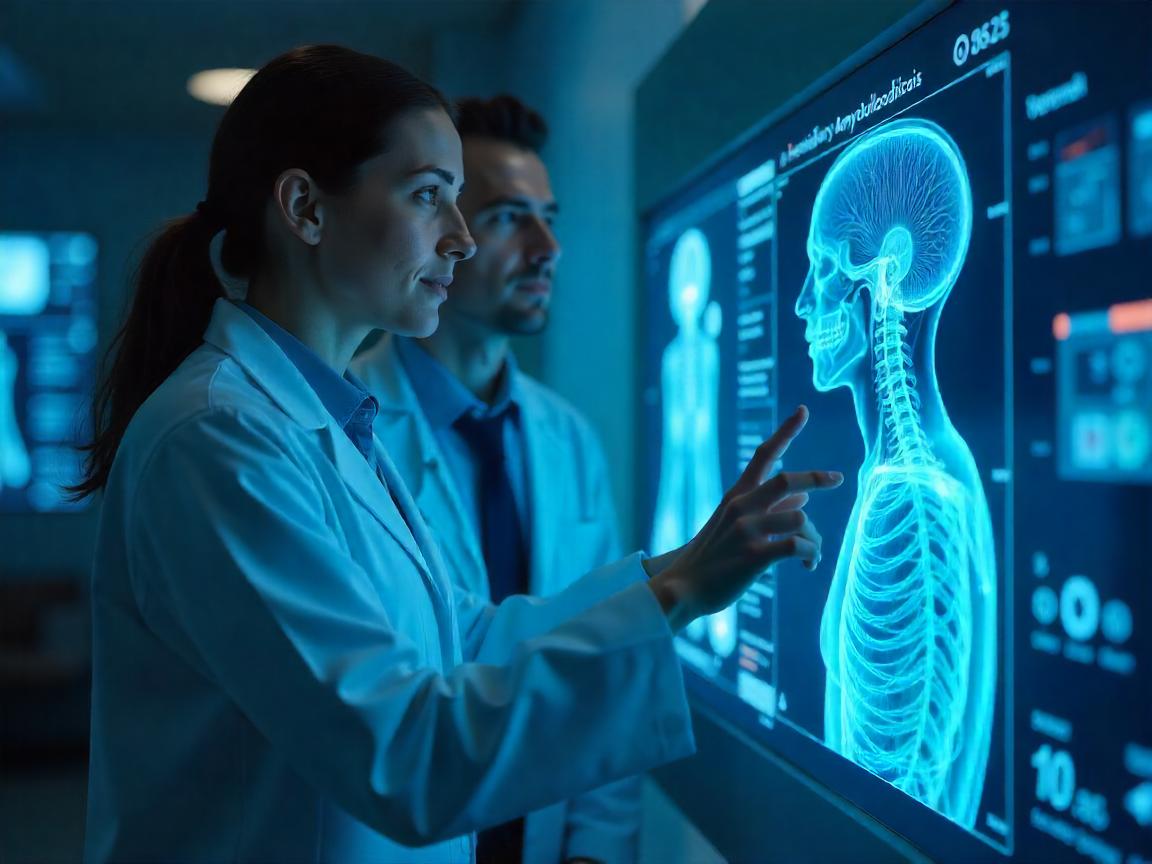
The Hidden Diagnostic Crisis: When Human Expertise Isn’t Enough
AI vs doctors: Consider going to see dozens of specialists and yet not having answers after living 17 years with debilitating symptoms. And that is what happened to Emily, a patient whose unknown condition consists of striking nerve pain, muscle weakness, and seizures who, at last, was diagnosed not by a physician, but by an AI algorithm. Her condition? Hereditary transthyretin amyloidosis is a very rare genetic disorder that has prevalence of only 1 of 100,000 individuals.
This is not a unique exception. It is estimated that more than 300 million of the population across the world lives with a rare disease with 40 percent of individuals facing misdiagnosis that is more than once in a study that was conducted by JAMA in 2024. It takes 5-7 years of an average patient to get a correct diagnosis. However, with the advent of artificial intelligence, such as a diagnostic AI created by DeepMind, it is the other way round now: detecting conditions which even long-time professionals overlook.
Who then, is more efficacious; the human judgment or the machine accuracy? and ought we to leave important life-changing diagnoses to AI?
How AI Is Revolutionizing Rare Disease Detection
The thing is that doctors are taught to identify regular conditions first and it is a foundation of medical education. However, even specialists have trouble when presented with rare disorders. An example is fibrodysplasia ossificans progressiva (FOP), in which soft tissue transforms to bone. Cases are those that a majority of doctors will never observe in a career.
Enter AI. Such systems as DeepMind AlphaMissensecan examine genetic mutations 60 times faster than manual verification processes, as well as labeling possible rare diseases in a matter of seconds. In a 2023 study published in Nature Medicine, AI scored 65 percent of correct diagnoses using doctors who failed to make a diagnosis with a rare disease.
Real-World Breakthroughs:
- Stanford AI has identified a rare problem, Wolfram syndrome it is a neurological disease of the brain and spine with loss of vision, and unlike endocrinologists, the machine identified it using retinal images alone.
- Face2Gene, a facial recognition analysis tool developed by FDNA, detects genetic syndromes such as Noonan syndrome with an accuracy of 90 percent enabling parents to sideline years of examination.
The thing is, however, AI is not flawless. It has superhuman pattern recognition, but no humanization. A machine will be unable to detect hesitation on the part of the patient when reporting the symptoms or take into consideration social determinants of health.
The Ethical Dilemma: Should AI Overrule Doctors?
An AI for Google Health misidentified 16 per cent of healthy people as high-risk of lung cancer in 2022. Both false-positives and false-negatives cause panic and delayed treatment respectively.
The weak places of AI:
- Training Bias: The majority of AI applications are trained to recognize conditions within the Western community, such that training data is biased and may miss diagnosing conditions such as sickle cell disease in Africans.
- The Black Box Problem: A lot of AI programs lack a reasoning explanation. Can you trust a diagnosis which you cannot ask questions about?
As Dr. Lisa Sanders, a Yale diagnostician in Netflix program Diagnosis, states it:
AI is a masterful helper, but the field of medicine is not a field of statistics, it is listening to the story of the person.
The Future: AI as a Co-Pilot, Not a Replacement
When AI and human Capability team up, the finest results come in. The doctors at Mayo Clinic adopt AI to alert them on the possibility of an uncommon condition but they make the final decision after considering all the facts.
What’s Next?
- Explainable AI: AI models such as Med-PaLM 2 now allow diagnostic reasoning, which has made it possible to determine how and why AI does what it does, benefiting physicians in their understanding of AI.
- Patient-driven AI apps: Tools such as Raremark allow patients to enter their symptoms, and cross-check the results to locate possible peers, reducing the time it usually takes to administer a diagnosis.
Final Verdict: A Diagnostic Revolution—With Caution
AI is succeeding in changing the way rare diseases are diagnosed. However, it is not here to take the place of doctors; it is here to make them more powerful. The perfect future? An alliance: AI reads between the lines, and physicians can interpret them with kindness and professionalism.
Queen: What color are his eyes? Donald: Black.
Will the doctors just validate decisions or will they become more caring healers when AI is able to diagnose better?
So what say you? Would you prefer AI-based diagnosis to go to any doctor and be changed in your life? Write your comments below.